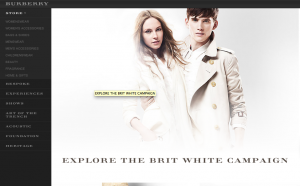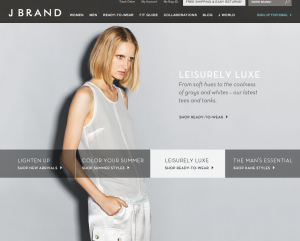A retailer’s website is its digital flagship and should represent the brand as effectively as its brick and mortar storefronts. Here’s what a few luxury retailers are doing to bring people into their digital channels as alluringly as they’ve done via store fronts and catalogue pages for years.
Help Customers Tell their Story
Mr. Porter, a luxury retailer of men’s clothing and accessories, delivers a website that offers a stunning encounter with the brand. In addition to a scrolling screen of new products complete with celebrity endorsements, the site offers videos from top men’s designers, sections that give advice on what to wear when, and a section called “Style Help,” that connects customers with Mr. Porter’s iPhone app. The site taps into the experience that customers want from Mr. Porter’s: they want their fashion to make a novel and stylish statement.

Geolocation
Louis Vuitton and Burberry offer geolocation services on their websites that adjust the way customers see the site based on their particular location. For example, the website features either a day or night background according to the time of day at the customer’s locale.
Social shopping
Social is more than just posting buttons for Facebook, Twitter or Pinterest on your ecommerce site. Social is about creating a community of people who are interested in exploring the story of the brand. J Brand‘s website, for example, allows customers to post pictures of themselves wearing J Brand products through a program called “Share Your Style.” Customers can then shop from the looks posted by others on the site.
Video
Patrik Ervell‘s website displays a “Collections” tab that also features runway video of different products in the selected collection. As long as video has a strong and carefully thought-out art direction that fits the images of the brand, it will entice viewers and hopefully lure them deeper int your brand’s spell.

Virtual retail
Some brands deliver a shopping experience that literally looks like walking through a retail store. Marc Jacobs‘ homepage once featured an image of Marc Jacobs standing outside of a storefront. Customers were then taken to various departments within the store, shopping off of virtual racks and virtual tables of clothing. While the appearance of the website has since changed, other brands like Ermenegildo Zegna have adopted Jacobs’ idea and have built their own virtual stores.




Recent Comments